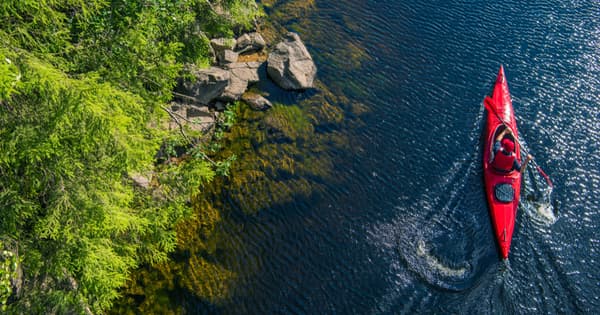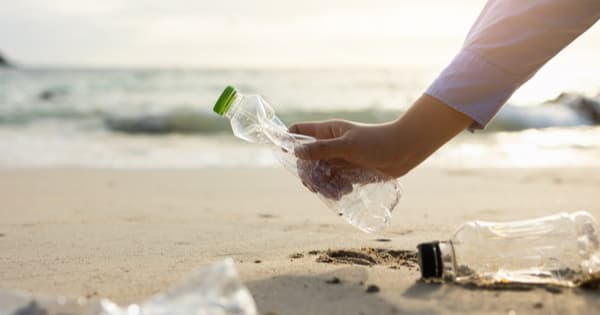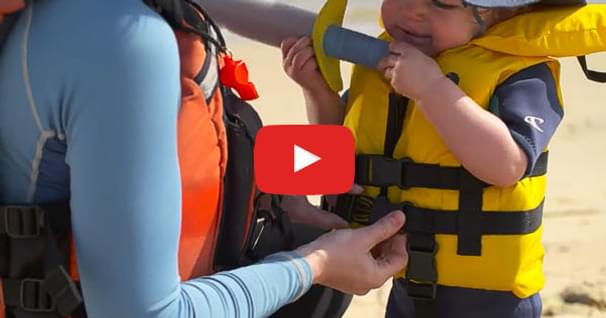Reduce Your Paddle-Print This Earth Day
As paddlers, we depend on pristine natural environments to enjoy our sport, and many paddlers fancy themselves environmentalists or at least environmentally conscious individuals. It is ironic that our beloved sport requires large amounts of gear, usually transported on a large vehicle, often to far off wilderness destinations, where we disturb natural areas and wildlife, eat heavily processed and packaged foods, and sometimes leave feces and garbage behind (intentionally or not).

I’m not suggesting we give up our love for paddling or far off wilderness destinations. I am suggesting that, as paddlers, we take a pause and think about what we can do to keep our waterways pristine and rehabilitate them, as well as minimize our overall ecological footprint.
Here are 13 tips for reducing your paddle-print:
1. Do some research on the supply-chain and the materials that are in the gear you buy. Many companies are using recycled/recyclable materials, reducing emissions in their factories, and ensuring fair wages for their employees. Others are not. Starboard is a great example of a certified B-Corp in the SUP space with eco-conscious products and fair labour practices.
2. Buy a boat made from recycled plastic, check out Islander Kayaks. If you are disposing of a boat or other gear, recycle it!
3. Buy used gear. Every region has its online buy-and-sell group; you can usually find what you're looking for and eliminate the need for a new one to be created. Check out Paddling.com's Classifieds section to find used gear.
4. Store your gear properly, dry and out of the sun. Care for and maintain your gear (so it will last its lifetime). Most quality outdoor equipment companies will take returns and do repairs under a lifetime warranty.
5. Fix your gear when it breaks rather than replacing it all the time. There are tons of great articles and videos on fixing your boat, paddle, dry-suit and other gear on the internet.
6. If you want a gear-refresh, organize or attend a gear swap with your friends and paddling community. Many folks have paddling equipment hanging around that is not being used.

7. Invest in a good water bottle, like a Hydro Flask. If you buy a good one, you are more likely to take care of it and not lose it! Get some bladder bags or a filter for refills. For the love of Poseidon, resist the urge to stop at the corner store and buy a 12-pack of disposable, plastic water bottles for a day of paddling.
8. Take your roof racks off your vehicle when you are not using them (Surprisingly, this substantially reduces fuel consumption).
9. If you paddle rivers or other A-to-B routes, make it a multi-sport event! Rather than driving back and forth to shuttle vehicles, use a bike or the shoelace express to get back to your car.
10. If you drive long distances to paddle, get a trailer that can carry a few boats so you can carpool with your friends. For most vehicles, towing uses less fuel than a stack of boats on the roof.
11. Pick up garbage when you are out on the water, at the parking lot and at the campsite. Litter can harm wildlife and when others see a clean place they are more likely to keep it that way.
12. There are lots of good organizations taking on waterway rehabilitation projects (check out: American Rivers, River Clean-up, Living Lands & Waters and Plastic Oceans Canada). Join one and get involved, donate your labor or some cash!
13. Organize your community to clean up your local stream, lake, river, or beach. It’s this easy.
Unless you live in the wilderness and paddle in a homebuilt boat made from natural materials, your paddling habit will increase your overall ecological footprint. Probably the biggest difference you can make is just not “over-consuming”. It’s hard to resist the flashy advertisements; there are fancy new products on the market all the time. The social pressure to look good with your shiny new gear in this season’s color palette is strong.
However, if your goal, like mine, is to be safe on the water and have a good time, then you don’t need much. Replace your gear when it’s worn out and unsafe. You don’t need new stuff every year or the latest gadget that you never needed before and will likely never use.
Consider the tips above and take some action to reduce your paddle-print. Let’s take care of our rivers so paddling never becomes a thing of the past.
Inspired by wanderlust and a passion for rivers, Adrian's paddling addiction has taken him across the globe. After pursuing his degree in Outdoor Recreation and Tourism Management, Adrian eventually settled in Palmer Rapids, Ontario. Here, he has worked for over a decade as the Director Of Operations at The Boundless School.
Related Articles
Before I was domesticated, I spent more than a decade working paddling gigs between paddling trips.…
This Point Of View account shows the importance of staying sober while paddling. Some of the most…
It was mid-April, circa 2002. There were still patches of snow in the forest. It was one of those days…



